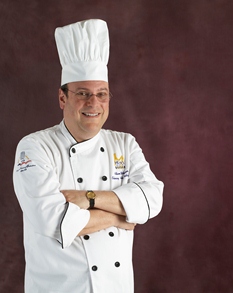50-Minute Classroom: Foodservice Economics
Monday, 31 October 2011 20:00
 Your students will groan with shock and surprise to learn that for every $100 in sales a foodservice operation earns only $4 to $7. But your job is to show them the real world they’re training to excel in.
Your students will groan with shock and surprise to learn that for every $100 in sales a foodservice operation earns only $4 to $7. But your job is to show them the real world they’re training to excel in.
By Adam Weiner, CFSE
At the June 2011 CAFÉ Leadership Conference roundtable discussion on the 50-minute classroom, one of the concerns raised was that students have no idea of foodservice economics. They have grown up watching “Iron Chef” and “Master Chef,” where expensive ingredients like truffles and caviar are tossed around like water. They have watched “Hell’s Kitchen,” where allegedly experienced chefs mishandle and mis-cook scallops, lobster and lamb, yet still remain eligible for the grand prize of running a restaurant.

 A new e-learning module focusing on practical foodservice uses for this fascinating fruit launches on the CIA ProChef Web site.
A new e-learning module focusing on practical foodservice uses for this fascinating fruit launches on the CIA ProChef Web site. Senator Schumer launches a push to secure new funding to help The Culinary Institute of America and Hudson Valley farmers get products on local shelves and into local restaurants.
Senator Schumer launches a push to secure new funding to help The Culinary Institute of America and Hudson Valley farmers get products on local shelves and into local restaurants. Olivewood Gardens and Learning Center in San Diego County connects and motivates students and families through organic gardening, environmental stewardship, nutrition education and cooking.
Olivewood Gardens and Learning Center in San Diego County connects and motivates students and families through organic gardening, environmental stewardship, nutrition education and cooking. Interest in Mediterranean-inspired fare continues to grow as more diners demand simple preparations, use of fresh ingredients and cooking methods that instill flavor without adding unhealthy fats.
Interest in Mediterranean-inspired fare continues to grow as more diners demand simple preparations, use of fresh ingredients and cooking methods that instill flavor without adding unhealthy fats.